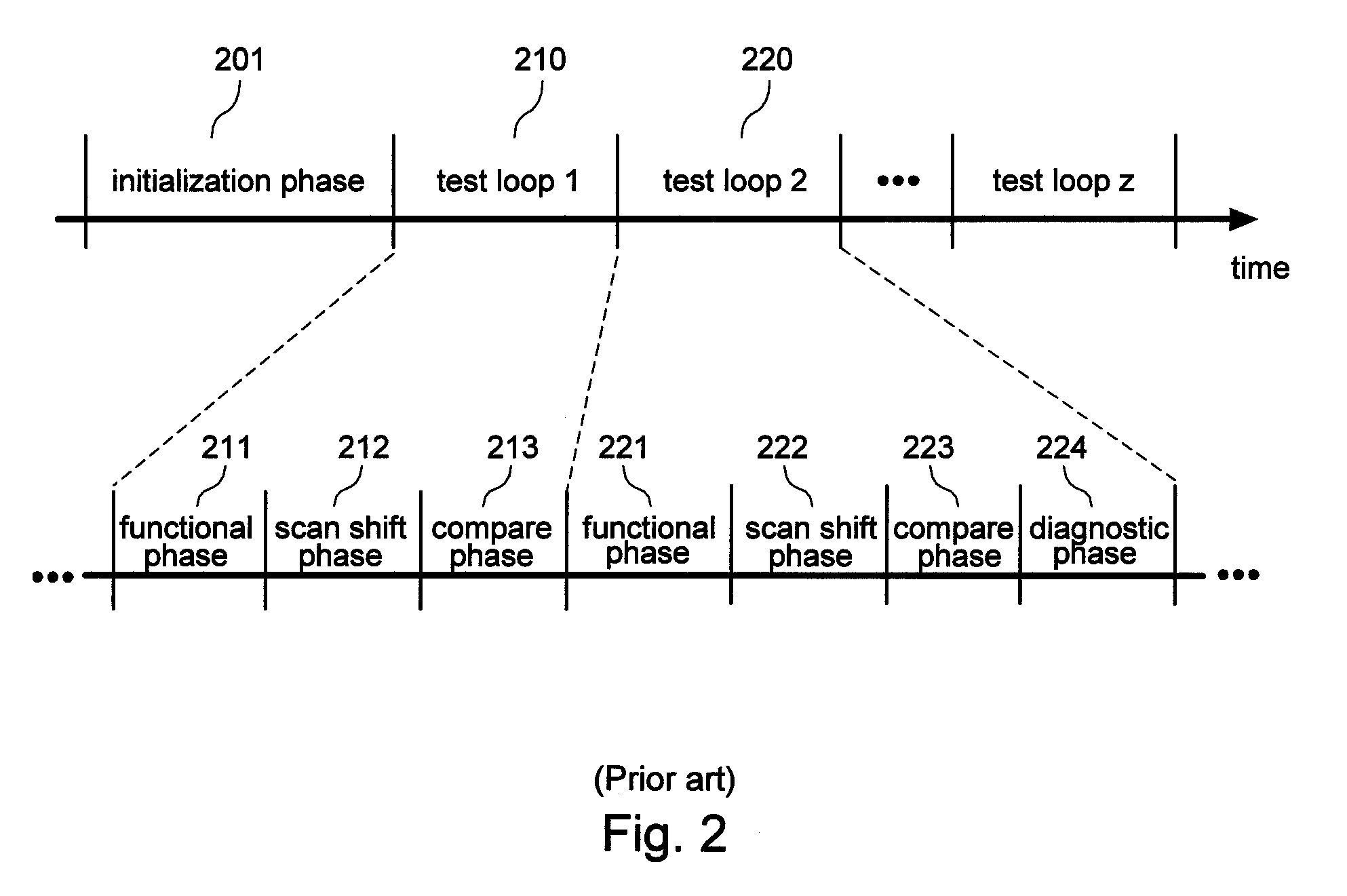Systems and methods for improved scan testing fault coverage
a scan test and fault coverage technology, applied in the field of test methods, can solve the problems of not providing the simple result of the logic circuit either, affecting the proper operation of the device, and specific and improbable combinations, etc., and achieve the effect of improving the fault coverage of scan tests
- Summary
- Abstract
- Description
- Claims
- Application Information
AI Technical Summary
Benefits of technology
Problems solved by technology
Method used
Image
Examples
Embodiment Construction
[0026]One or more embodiments of the invention are described below. It should be noted that these and any other embodiments described below are exemplary and are intended to be illustrative of the invention rather than limiting.
[0027]As described herein, various embodiments of the invention comprise systems and methods associated with integrated circuits (ICs) to manage the composition of input test bit patterns to improve the fault coverage of scan tests such as logic built-in-self-tests (LBISTs). While the embodiments described in detail below are implemented in LBIST systems, it should be noted that alternative embodiments may be implemented in systems that implement testing using automated test pattern generators (ATPG's) or other means to generate test patterns for the scan chains. References below to LBIST should therefore be construed broadly to encompass ATPG-based systems and other types of test systems that use scan chains.
[0028]The various embodiments of the invention may...
PUM
 Login to View More
Login to View More Abstract
Description
Claims
Application Information
 Login to View More
Login to View More - R&D
- Intellectual Property
- Life Sciences
- Materials
- Tech Scout
- Unparalleled Data Quality
- Higher Quality Content
- 60% Fewer Hallucinations
Browse by: Latest US Patents, China's latest patents, Technical Efficacy Thesaurus, Application Domain, Technology Topic, Popular Technical Reports.
© 2025 PatSnap. All rights reserved.Legal|Privacy policy|Modern Slavery Act Transparency Statement|Sitemap|About US| Contact US: help@patsnap.com



